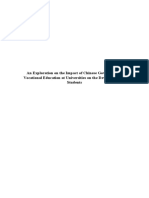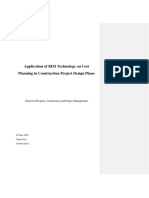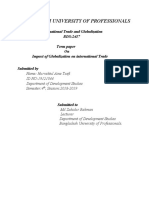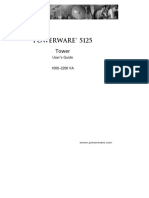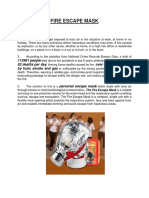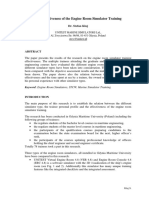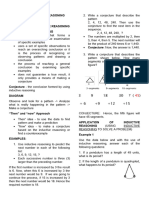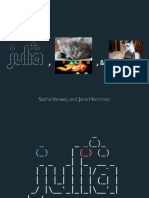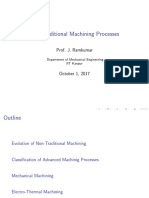CIVE1255 Infrastructure Planning and Management - 2025
Plagiarism, contract writing, and discussion with other students are serious offenses and
RMIT University is taking actions on avoiding those offenses very seriously. These offenses
may lead to serious consequences, such as failure of the course and termination of your
degree. More details can refer to RMIT Website.
- Please answer all (07) questions. All the answers should be prepared and combined
in one PDF file. The file name is “Your name + student ID”.
- All the descriptive and calculation answers should be presented with steps. Marks
will not be given if only the final results are provided.
- If your calculations are based on Excel, please paste the screenshots of the excel
calculations on the answer sheet.
- If some data are missing from the questions, you may make necessary assumptions.
- Submission deadline: 12.00 noon Saturday 14th June 2025.
- Following the school policy, you will have 24 hours to complete the final report.
- Submission method is online.
- Remember the submission link will be automatically closed after the deadline and
please do not wait until the last minutes to submit to avoid submission failures.
1) The state government has identified an urgent need to implement several critical
infrastructure projects, including an airport expansion, the development of a new train
hub, and essential road maintenance. However, due to budget constraints, the
government has decided to proceed with only two of these projects using its available
funds. The remaining project(s) may be delivered through alternative financing and
delivery mechanisms. At the same time, a private company named InfraTech has
proposed an upgrade to the city’s bus route network to improve public transportation
services. As an infrastructure planning engineer, you are required to prepare a report that
includes the following:
1.1 Describe how infrastructure development contributes to the economic growth of
a country or region. (3 marks)
1.2 Identify and discuss new aspects influencing the planning and delivery of modern
infrastructure projects. (3 marks)
1.3 Compare the two infrastructure delivery approaches discussed above, highlighting
their impacts across different project phases. You may also explore the various
models within the above delivery method. (6 marks)
1/5
2) You have been invited as a guest speaker by the local council to share your expertise on
infrastructure planning process and Environmental impact assessment. Your
presentation will focus on outlining the key steps involved in infrastructure planning.
2.1 What are the steps in infrastructure planning process. (2 marks)
2.2 Elaborate on the purpose and content of preliminary and feasibility reports and
identify the various types of data and information required for each. You may use
the Melbourne Metro Tunnel project as an example to illustrate your findings. A
wide range of resources is available online, including those from Infrastructure
Australia and project business case evaluations, to support your analysis. (6 marks)
2.3 Discuss the difference between Environmental impact assessment and
Environment impact statement for infrastructure planning. (6 marks)
3) CN Constructions is a small residential construction company managing its financial
activities with a fixed annual interest rate of 3%.
3.1 In 2016, CN Constructions had $80,000 in its business savings account. Assuming
no additional deposits or withdrawals, what will be the account balance at the end
of 2025? (2 marks)
3.2 In 2016, CN Constructions purchased a new site crane costing $175,000, funded
entirely by a loan. They plan to repay the full amount with equal annual payments
by the end of 2030. How much must they pay each year over this period? (2 marks)
3.3 in 2021 due to the covid situation, the company had financial difficulties and asked
banks to hold the receives permission from its creditors to suspend payments on
its loan for 5 years. What equal annual payments would be required to complete
the payback of the loan by the originally scheduled date? (6 marks)
4) The council managers have undertaken a decision tree analysis to support infrastructure
planning aimed at mitigating the risk of dam overtopping due to extreme flood events.
Three possible actions are being considered 1) Installing a warning system to activated in
the event of Probable Maximum Flood (PMF), 2) reconstructing the spillway, and 3)
changing reservoir operations. Under the first option: installing a warning system, the
probability of the PMF occurring within a 50-year period is 0.995, in which case the value
of agriculture protected by the dam is estimated at $10,000. If the PMF not occurs
(probability 0.005) and the dam fails, the economic loss would be $9,808. Still there will
be 2000 of agricultural value. In the second option: reconstructing the spillway, the dam
is assumed to be completely protected against failure. This option has a reconstruction
cost of $4,486 while still preserving the same $10,000 agricultural value. The third option:
changing reservoir operations, assumes a very low probability (0.001) of dam failure and
would result in an agricultural output valued at $3,000. However, if the dam does not fail
the same agriculture value would be 8,000. The council must use this analysis to evaluate
expected monetary outcomes and determine the most economically and socially
appropriate intervention. Please develop a decision tree diagram and discuss your answer.
(8 marks)
2/5
5) You are part of a sustainability assessment team evaluating the carbon footprint of a new
1-kilometre, two-lane asphalt road being constructed in a regional area. The project
involves the use of 1,200 tonnes of hot mix asphalt, 2,000 tonnes of crushed aggregate
base, 100 tonnes of bitumen binder and 300 m³ of concrete for drainage and kerbs.
Asphalt and aggregates are sourced from a regional quarry 60 km away, bitumen is
transported from a refinery 250 km away, and concrete and steel are delivered from local
suppliers within 20 km. Construction activities include excavation, grading using diesel-
powered machinery, asphalt paving, and concrete placement. Material waste during
construction is estimated at 5% for asphalt and 2% for concrete and dumped yard is
located at 20 Km away.
5.1 Your task is to calculate the total CO₂ emissions associated with the production,
transport, and on-site use of materials, including emissions from construction
machinery. You are required to find appropriate CO₂ emission factors from reliable
sources, apply them to the quantities used (including waste), and estimate total
emissions by category (A1- A3, A4 and A5). You may make assumptions when
necessary. You are required to include your reference. (12 marks)
5.2 Propose a recommendation for carbon reduction strategies for similar projects in the
future. (2 marks)
6) The water services division of a local council operates several water pumps for continuous
water distribution across the region. One of the main pumps has shown frequent
breakdowns in recent years, prompting the engineering team to evaluate maintenance
strategies. From historical maintenance logs over the past 3 years, it was found that: The
pump has failed 6 times during operational hours totalling 10,000 hours. The average
repair time per failure is 6 hours.
1.1 Calculate the Mean Time Between Failures (MTBF) and the failure rate (λ) for the
current pump operation. (4 marks)
1.2 Explain the difference between Preventive Maintenance and Reliability-Centered
Maintenance, specifically in the context of critical infrastructure like water pump.
(2 marks)
3/5
7) The Bright Council is considering an upgrade to the existing two-way lanes to manage the
current traffic congestion and has identified two possible methods: add additional two
adjacent lanes and a new four-lane highway with new alignments. The length of the road
in both options are 50km. The construction commences in 2026. Below is the detailed
cost.
Cost category two adjacent lanes four-lane highway with new
alignments
Material cost $1950,000 $2180,000
Labour and equipment cost $800,000 $ 10,000,000
Maintenance & inspections $600, 000 annual $500, 000 every 3 years
Replacement $100,000 Every 8 years $100,000 Every 12 years
Two adjacent lanes option takes two years to construction while four-lane highway with
new alignments option takes 3 years to complete. The council has determined that both
methods provide substantial benefits in terms of vehicle time savings, fuel cost reductions
and accident cost savings. The specifics are as follows:
Time savings /vehicle– two adjacent lanes 30 minutes
Time savings/vehicle – four-lane highway 40 minutes
Value of savings 0.5$/ hour
Average Vehicle fuel consumption 10 l/100km
Fuel Price 0.189 $/l
Fuel savings on vehicle - two adjacent lanes 10%
Fuel savings on vehicle - four-lane highway 12%
Accident rate– two adjacent lanes 4.64 per 100,000 of vehicle
Accident rate – four-lane highway 5.4 per 100,000 of vehicle
Accident cost 5,600
The council has observed a fluctuating trend in vehicle demand over recent years,
alongside consistent population growth. The table presents weekly vehicle numbers and
population data from previous years. Starting from 2025, the population is projected to
grow at an annual rate of 5%. Based on this information, forecast the vehicle growth over
the next 30 years. It is expected to increase the fuel price 5% annually. Further four-lane
highway is expected to charge a user fee at $0.23 per vehicle.
4/5
Year No. of Vehicles annual Population (Annual)
2014 500 10,200
2015 550 10,480
2016 600 10,890
2017 650 11,340
2018 700 11,800
2019 750 12,300
2020 800 12,870
2021 850 13,350
2023 900 14,100
2024 1000 15,100
Please consider the discount rate as one digit of student ID (x%) and compare the financial
viability of the project for 30 years by calculating
7.1 Benefit Cost ratio
7.2 Net Present Value (NPV)
7.3 Discounted Payback period
7.4 Internal Rate of Return (IRR)
7.5 It is noted that the material price and replacement cost are subjected to uncertain. Please
identify the sensitivity of these variables to NPV (36 marks)
END OF ALL THE QUESTIONS
5/5




































































